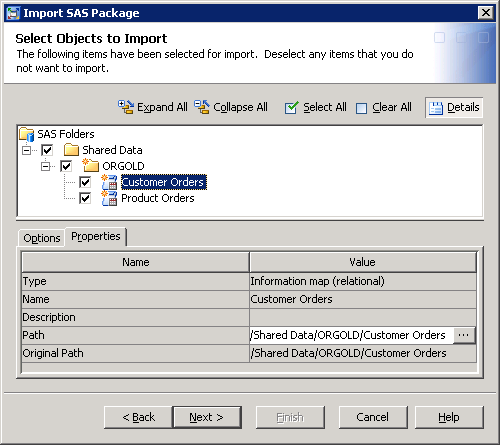My team and I have been developing a solution which involves a degree of SAS reports and related metadata. I set up a scheduled, automated backup of our information maps, reports, etc for posterity, and out of general paranoia. For this I used SAS’s command line export and import capabiltiies, which probably weren’t designed to be used that way, but which turned out to be really useful.
It took a wee bit of trial and error, so I thought I’d document it here.
Note: If you’re puttying into your SAS server, make sure that your putty session has “Enable X11” ticked.
Export
(Ignore any new lines in the text below – I’ve added those for readability)
/usr/local/SASHome/SASPlatformObjectFramework/9.3/ExportPackage -host “mysasmachine” -port 8561 -user myuser@saspw -password mypassword -package “myPackage.spk” -objects “/Shared Data/mySourceFolder(Folder)” -includeDep -subprop
- includeDep means that all objects that the export depends on are also exported
- You can also specify “-types” with the types of files you wish to export
- Without specifying “(Folder)” on mySourceFolder, all files will be exported “flat” i.e. without their folder hierarchy
Import
/usr/local/SASHome/SASPlatformObjectFramework/9.3/ImportPackage -host “mysasmachine” -port 8561 -user myuser@saspw -password mypassword -package “myPackage.spk” -target “/Shared Data/myTargetFolder(Folder)” -subprop myPackage.subprop
- Without specifying “(Folder)” on myTargetFolder it would create a new folder with the name of the old parent folder in the new parent folder (e.g. /myTargetFolder/mySourceFolder)
